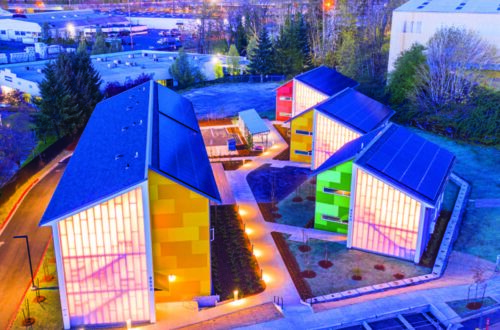At this point, we know humans have had a huge impact on the environment; attempts to mitigate these effects have seen rapid advancement thanks to increasing urgency and ever growing technology. Today, conservationists find a wealth of tools at their disposal, allowing for amazing and ever-evolving relationships with the flora and fauna they seek to save, from planting acoustic monitoring equipment in the trees and listening in to partnering up with an artificial intelligence to monitor ecosystems.
Burn, Baby, Burn
Though breaking oil dependency is very much a prime conservation goal, it pays to be prepared for when oil related technology fails. We’ve often found ourselves at a loss when an oil spill occurs, mostly helpless to do anything but deal with the after-effects. That’s why a breakthrough in civil engineering has been heralded as particularly promising. It’s called the “blue whirl”, and the University of Maryland’s A. James Clark School of Engineering team that discovered it thinks it has enormous potential to help with oil spill cleanup. Setting the crude oil sitting on the surface alight has been a useful technique, but the huge amounts of smoke generated were a major pitfall. The blue whirl burns more efficiently and more cleanly than a typical flame, reducing harmful emissions.
Terra-I, Eco-Friendly Robot
When it comes to tracking deforestation, the sheer size of forests, jungles, and rainforests was the biggest obstacle to large-scale action meant to save vital habitats. That’s where Terra-i comes in. The artificial intelligence program has been picked up by a number of South American governments, crunching real-time rainfall data and checking estimated greenness against images snapped by satellites. Any discrepancies researchers can analyze, literally mapping the effects of human activity on the environment. Terra-i’s biggest perk is its ability to learn via neural network from the data it records, helping to get a picture of actual greenness levels at any given time and precipitation levels, eliminating false flags.
Elephants and Emojis
In a twist on tagging technology, Kenyan elephant collars have been equipped with mobile SIM cards. This chip, in conjunction with GPS tracking software, shoots off a text message to researchers reporting on the elephant’s location. In the future, it’s hoped this system could be further developed to ease human-animal conflict. Software engineer David Gachuche with Save the Elephants hopes the lumbering giants may one day send warning texts to vulnerable citizens as they near residential property: “For example, an elephant going close to a farm, could send a text message, saying: ‘I’m about to invade your farm’.”
Bioacoustics
Overwhelming scope has always been the bane of widespread conservation efforts, but technology comes to the rescue again by automating the process of biodiversity research. Recording equipment nestled in various sites throughout a habitat can much more easily pick up and quantify the daunting amount of animal calls heard throughout the day. This helps researchers identify species, check the health of biodiversity, and determine changes in population and their causes.
Saving the environment is no easy task, but technology is constantly changing how effectively humans can enact conservation efforts. New, longer strides are made every day in the endeavor to save our planet; these few innovative projects are just the tip of the iceberg. Civil engineers around the globe are working to develop massive conservation projects and methods of producing energy that can literally change the world. Click here to get more information about civil engineering.

Kara Masterson is a freelance writer from West Jordan, Utah. She graduated from the University of Utah and enjoys writing and spending time with her dog, Max.






